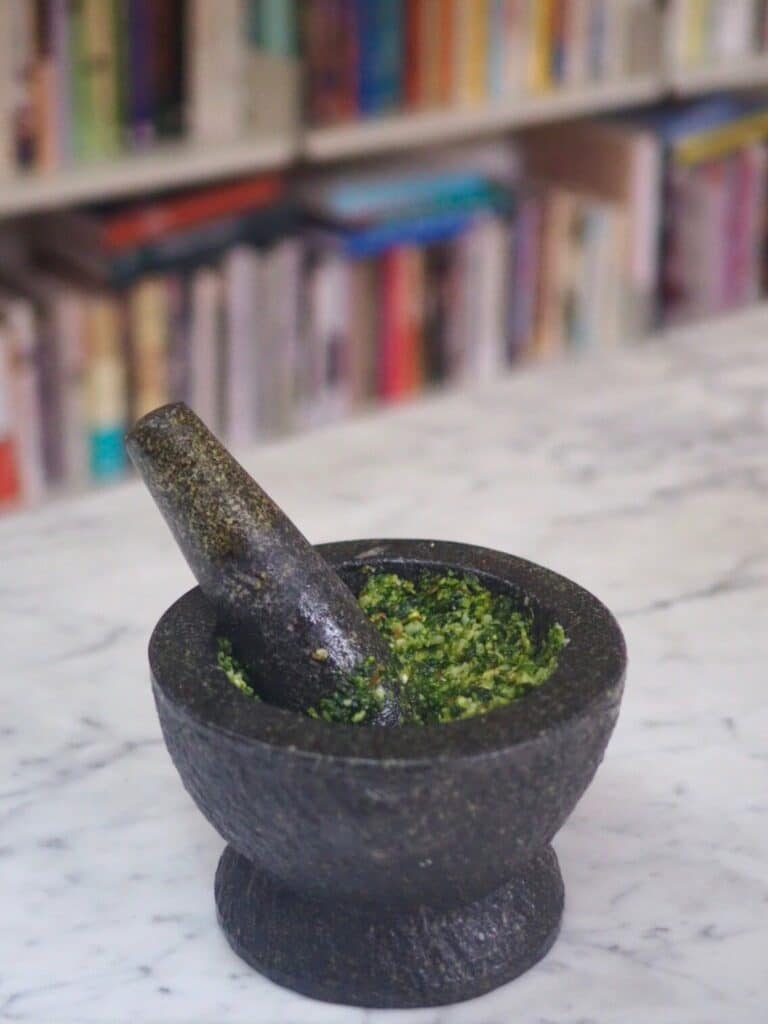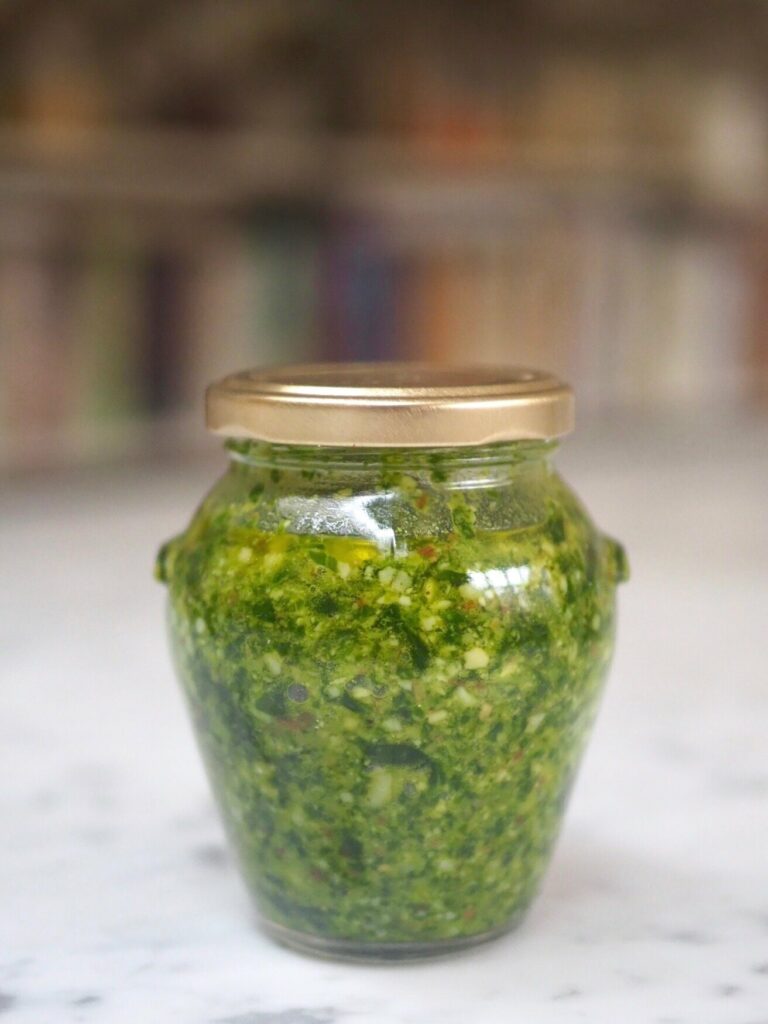It would be verging on criminal to reserve pesto only for pasta, because basically it’s delicious on everything. Drizzle it over or through any steamed or grilled greens, spoon on top of roasted sweet potatoes or squash and stir it into some warmed spelt for a cheats risotto. The list goes on but I think you get the gist………
I almost missed the best of the wild garlic window this year. So I was eternally grateful to my wonderful neighbours who returned from a secret lockdown foraging expedition with a bulging bag of leaves for me to play with. And so I found my way back to cooking through the seasons with a dreamy condiment, now happily sitting in the fridge ready to smother over essentially everything I want to eat.
Please do not limit your adventures in pesto to wild garlic. In fact, sorrel, with its heady lemony undertones, is a close contender for favourite pesto flavour when I can get my hands on some. Pounding pesto not only is an effective form of aggression therapy and general stress reliever, it’s also a wonderful use for sad looking herbs in the bottom of the fridge. Replace the garlic leaves below with the obvious basil, or the less obvious coriander or rocket or of course sorrel (or a combination of any or all of the above).
While on the ingredients substitution conversation, pesto should not be restricted to pine nuts and parmesan. For the wild garlic pesto here I used almonds and a mixture of grated hard goats cheese and pecorino. But cashews, walnuts and pistachios also make a welcome variation alongside any hard sheeps, goats or your favourite cows cheese.
So hurry up, get out and find some wild garlic before the season ends and don’t be shy, make a lot. Pesto will last in the fridge for a good few weeks (make sure there is always a thin layer of oil on top) and it freezes beautifully in small containers or ice cube trays, ready to stir into anything your heart desires at the drop of a hat.

A Few Notes on Pesto:
As wild garlic pesto is naturally heavy on the garlic flavour I do not add a garlic clove to the mixture, but if you are making pesto with any other herb variety, add a clove of garlic (or a couple of cloves of confit garlic) at the beginning of the blending process.
Please remember, nut rules apply here too – always toast first for about 10 minutes on a roasting tray at 180C. Makes ALL the difference.
I love the meditative action of bashing these ingredients into a sauce by hand in my trusty mortar and pestle, but feel free to make in a food processor. It’s less of a workout, but I get it if the pounding method sends you over the edge. The texture will be slightly different but just do whatever suits you best. The result will still be delicious.
Finally, for those of you who love an edible gift, this is a winning option.
Wild Garlic Pesto
- 50g wild garlic leaves (washed and dried)
- 20g flat leaf parsley
- 40g toasted almonds (skin on is absolutely fine)
- 40g grated mixture of hard goats cheese and pecorino (or any of the varieties above)
- zest and juice of a lemon
- 60ml olive oil (or more for a runnier consistency)
- Pinch of Aleppo pepper flakes (optional)
- a good pinch of salt and a good grind of pepper to taste
Mortar and pestle method:
Start by pounding together the wild garlic leaves, parsley and the toasted almonds until the leaves are macerated and almost paste like. (if you are using another herb instead, start by bashing the garlic with a good pinch of salt into a paste before adding the leaves and nuts)
Gently incorporate the cheese and lemon zest then drizzle the olive oil while stirring constantly.
Finally taste and add a squeeze of lemon if you want a little more zing, some pepper and a good pinch of salt. Remember if you use parmesan it errs on the salty, so always taste.
Food Processor Method:
In the smaller bowl of a food processor, start gently pulsing the wild garlic leaves and parsley with a little salt.
Add the almonds and pulse until everything is quite well chopped, followed by the cheese and the lemon zest.
Finally drizzle in the oil until everything is emulsified. Be careful not to over mix. I always prefer to pulse the food processor, rather than keep the motor running to avoid it turning to mush as it helps retain a little texture.
Have you made this dish?
Let me know what you think, share your efforts and any tweaks you made to the recipe on Instagram, don’t forget to tag #BuildingFeasts or email me on info@buildingfeasts.com
